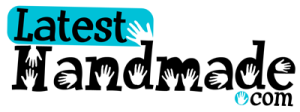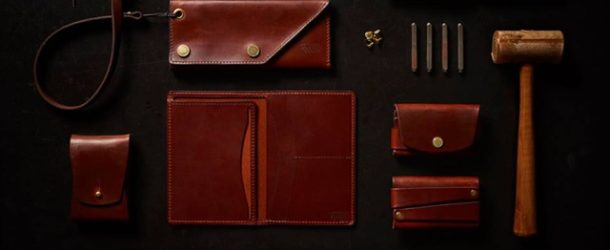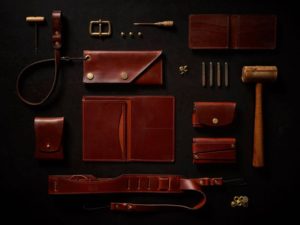Simple Beginning Leather Projects to help grow your craft
We all must start somewhere, why not choose from one of these easy projects
If you are new to leather working, then you may want to jump right into your first project. You have the tools and have read up on what you need to do to get started, the only thing which really remains is getting the right project to help grow your craft. And here is where many beginners hit a road block. Either the novice will pick a project which is far outside their current skill level, or the person will choose a beginning project which is not engaging and become disinterested in further endeavors. To help motivate you, but at the same time challenge you, here are simple beginning leather projects to help grow your craft.
Understanding how to cut and stitch leather is a critical part of building your craft. A leather wallet is a great cornerstone from which you can build these fundamentals. First, the bi-fold wallet pattern is composed of mainly squares and rectangles. There are no complex cuts, so you can focus on getting the method down. Secondly, you can work on darkening your leather, beveling your edges, using your leather working tools, and hardening your leather without the need to waste a ton of hide. Leather, especially genuine leathers (over synthetics) can be pricy. A wallet is a small and simple way for you to practice and grow your craft. It is also a way to pay for future projects, as wallets are always in demand. Once you master the bi-fold wallet, try to do a few luxury style slim wallets to build up your craft.
Baby Moccasins
Those which have an understanding of their leather working tools and wish to be a bit adventurous, may wish to try making some baby nubuck leather moccasins. Nubuck leather requires a higher level of concentration and delicacy when sewing and gluing. This is why I say that you should try a baby moccasin over an adult sized foot. It is advised that if you try this project on anything larger than the scale of a child’s foot, that you use a wooden shoe support to help you shape your product. Keep in mind that the nubuck shoes will be a bit flimsy and will fold in upon themselves. You are not making loafers or luxury shoes at this point, but building up the essential skills to branch out later.
The nubuck moccasin focuses your craft to sewing as well as boosts your ability for precision cuts. It is advised that you use a template for your moccasins, and that you cut and bevel all your pieces before you attempt to sew them together. If you have questions about sewing nubuck leather, ask your local leather artisan for advice.
Make a simple handbag
So, you have mastered making belts and wallets and you want something a bit more challenging. Perhaps a handbag would be a fair challenge. Unlike a wallet or a belt, an AVA style handbag will require you to have an understanding of leather thicknesses, various stitching, seams and glue techniques, how to properly add supporting materials (such as clasps, tags, and handle attachments) as well as how to use your leather working tools properly. Additionally, unlike the wallet and the belt which has primarily one size and shape to the cuts, on the handbag you will be required to make triangles, rectangles, squares, arches, etc.
This is a great project for those which have grasped the very basics of leather working but have not quite gotten to the point of creating professional grade products. As you will be creating a leather handbag, there are a few options you may wish to consider. Building off of the template, you could add a custom interior lining, dye the leather, harden or soften the leather, or chose various gauges of leather depending on where it will be sown (thick on the handle thin on the sides).
A note about building your craft
When you begin to work as a leather artisan, it is essential that you pick various projects. This will ensure that you learn the skills and not just how to make a particular item. While you may be great at making wallets, could you perform complex cuts should a client request a slim wallet, a customized shape, a coin purse, etc. The point is that you should start with something very basic and get your fundamental skills down. Once you have your leather working tool skills mastered, you should move to complex cuts, once complex cuts are down try some specialized techniques. Do not fall into doing the same thing every time. Download various template, watch some tutorials, and practice.
















Comments are closed.